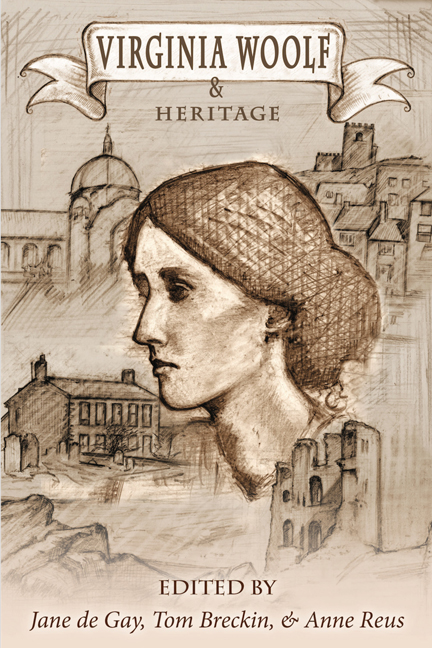Book contents
- Frontmatter
- Contents
- Introduction
- List of Abbreviations
- HERITAGE: A DEBATE
- HERITAGE, EDUCATION, AND MENTORING
- HERITAGE SPACES
- LITERARY AND CULTURAL HERITAGES
- QUEER PASTS
- MODERNISM AND HERITAGE
- WRITING LIVES AND HISTORIES
- WOOLF'S LEGACIES
- “A shadow crossed the tail of his eye”: The Reception of Virginia Woolf in Romania: Heritage Transformed
- Woolf 's Imaginarium: Exploring Virginia Woolf 's Legacy to Contemporary Polish Culture
- An Office of Her Own? Alice Munro and the Legacy of Writing with In-Authority
- Thinking Back through Virginia Woolf: Woolf as Portal in Lidia Yuknavitch's The Small Backs of Children
- The Malicious Gene: An Evolutionary Games Strategy? Woolf 's Hawkish Inheritance
- FINALE
- Notes on Contributors
An Office of Her Own? Alice Munro and the Legacy of Writing with In-Authority
from WOOLF'S LEGACIES
- Frontmatter
- Contents
- Introduction
- List of Abbreviations
- HERITAGE: A DEBATE
- HERITAGE, EDUCATION, AND MENTORING
- HERITAGE SPACES
- LITERARY AND CULTURAL HERITAGES
- QUEER PASTS
- MODERNISM AND HERITAGE
- WRITING LIVES AND HISTORIES
- WOOLF'S LEGACIES
- “A shadow crossed the tail of his eye”: The Reception of Virginia Woolf in Romania: Heritage Transformed
- Woolf 's Imaginarium: Exploring Virginia Woolf 's Legacy to Contemporary Polish Culture
- An Office of Her Own? Alice Munro and the Legacy of Writing with In-Authority
- Thinking Back through Virginia Woolf: Woolf as Portal in Lidia Yuknavitch's The Small Backs of Children
- The Malicious Gene: An Evolutionary Games Strategy? Woolf 's Hawkish Inheritance
- FINALE
- Notes on Contributors
Summary
Alice Munro's short story “The Office” opens with an announcement from the narrator, a housewife, mother, and writer: “The solution to my life occurred to me one evening while I was ironing a shirt. It was simple but audacious. I went into the living room where my husband was watching television and I said, ‘I think I ought to have an office’” (59). This opening statement can be read as both echo and response to the first sentence of Virginia Woolf 's A Room of One's Own: “But, you may say, we asked you to speak about women and fiction—what has that got to do with a room of one's own?” (1). Like Woolf 's narrator breaking into her argument with the famous first “but,” so Munro's protagonist “but(t)s into” the narrative and her husband's relaxing TV session. This abrupt opening thus hints at the way in which Munro's story takes up a rhetorical strategy explored by Woolf in Room. Moreover, describing an office as her ideal writing room, Munro's protagonist seems to answer Woolf's question of what a room has got to do with women and fiction. Her very specific choice of writing space underlines the importance of the spatial setting in strengthening the woman writer's sense of herself as professional author. As Nischik notes, the label “office” lends “the desired space of one's own more dignity,…stressing that writing is a profession that needs focused attention and seriousness of purpose” (47). Munro's “The Office” thus also inherits from Woolf an interest in the spatial prerequisites for women's writing.
Yet a Woolfian legacy shapes Munro's story in ways which go beyond a shared interest in spaces for women's writing. Both Woolf and Munro, my paper argues, use the discussion of writing spaces as a launching pad for exploring further questions. How far, they ask, can women writers claim for themselves traditionally masculine positions of authorship and authority, and in what ways may authoritative forms of literary discourse be transformed by women's writing? In both Room and “The Office,” the interruption as plot element and as rhetorical strategy plays a central role in answering these questions.
But what have writing spaces got to do with positions of authorship and authority? To answer this question, it is important to note that neither a private room nor an office are neutral interiors female authors can simply make use of.
- Type
- Chapter
- Information
- Virginia Woolf and Heritage , pp. 244 - 250Publisher: Liverpool University PressPrint publication year: 2017



